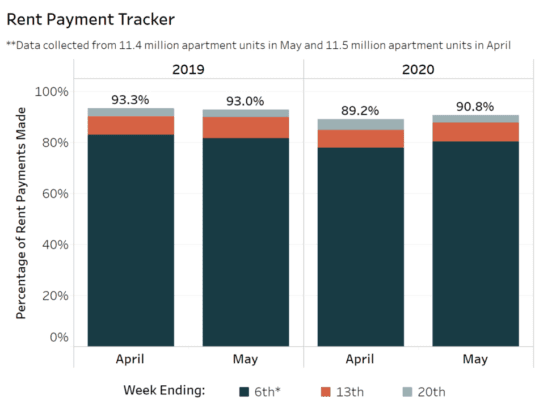Unemployment numbers have surged in the United States, with more than 40 million people who have filed for jobless benefits. Although there is concern about the multifamily housing market, historically this sector is always one of the first to recover from an economic downturn. After the Great Recession, multifamily rentals proved to be more resilient than retail, office and industrial spaces in multiple ways, including the lowest level of rent decline.
A survey of 11.4 million units conducted by the National Multifamily Housing Council (NMHC) reports that 90.8 percent of apartment renters made a full or partial payment by May 20. The hardships caused by the pandemic are not ending anytime soon, but investors should be comforted in knowing that apartment renters who can pay rent are stepping up and making rent a priority.
As we’ve talked about earlier, real estate is still the best investment option. We recognize new investors may have questions on the returns of multifamily housing at the moment, but these investments are not as volatile as the stock market. Plus, we base our assessments on a sensitivity analysis and look at how outcomes are affected by variables beyond the investor’s control. The analysis enables investors to review the impact a change in any variable would have on the property’s bottom line numbers. Essentially, we look at how sources of uncertainty – like what’s happening within the pandemic – contribute to the model’s overall uncertainty.
For example, investors want to know how well a rental property will perform financially based on a series of possible purchase prices. The price you’d end up paying for the investment affects the cash flow, rates of return and profitability an investor will get as a result of the acquisition. We like to show investors the breakeven point for profitability if there is a decline in occupancy or decrease in rent projections. Most of our scenarios allow occupancy to go to 75 percent to breakeven. Right now, the overall numbers remain strong for investors in the middle-market, multifamily sector.
Investors should diversify their portfolio and look for recession-proof markets and properties that have an optimal mix of economic drivers to support high occupancy. Class B assets generate cash flow and is one of the most economically practical and affordable avenues of access to the market. Additionally, while construction has been speculative for new Class A developments, projects that are already built are doing well, similar to Class B, since renters have more reserves and are committed to paying rent.
Industries like travel and tourism have been hit hard during the pandemic impacting investments like short-term vacation rentals and retail. But people always need a place to live. As housing trends continue to improve, there will be a growing demand for more affordable housing and a need for the future of multifamily housing market. This is a resilient investment. Be proactive about the sector’s future and contact us about investment opportunities.

